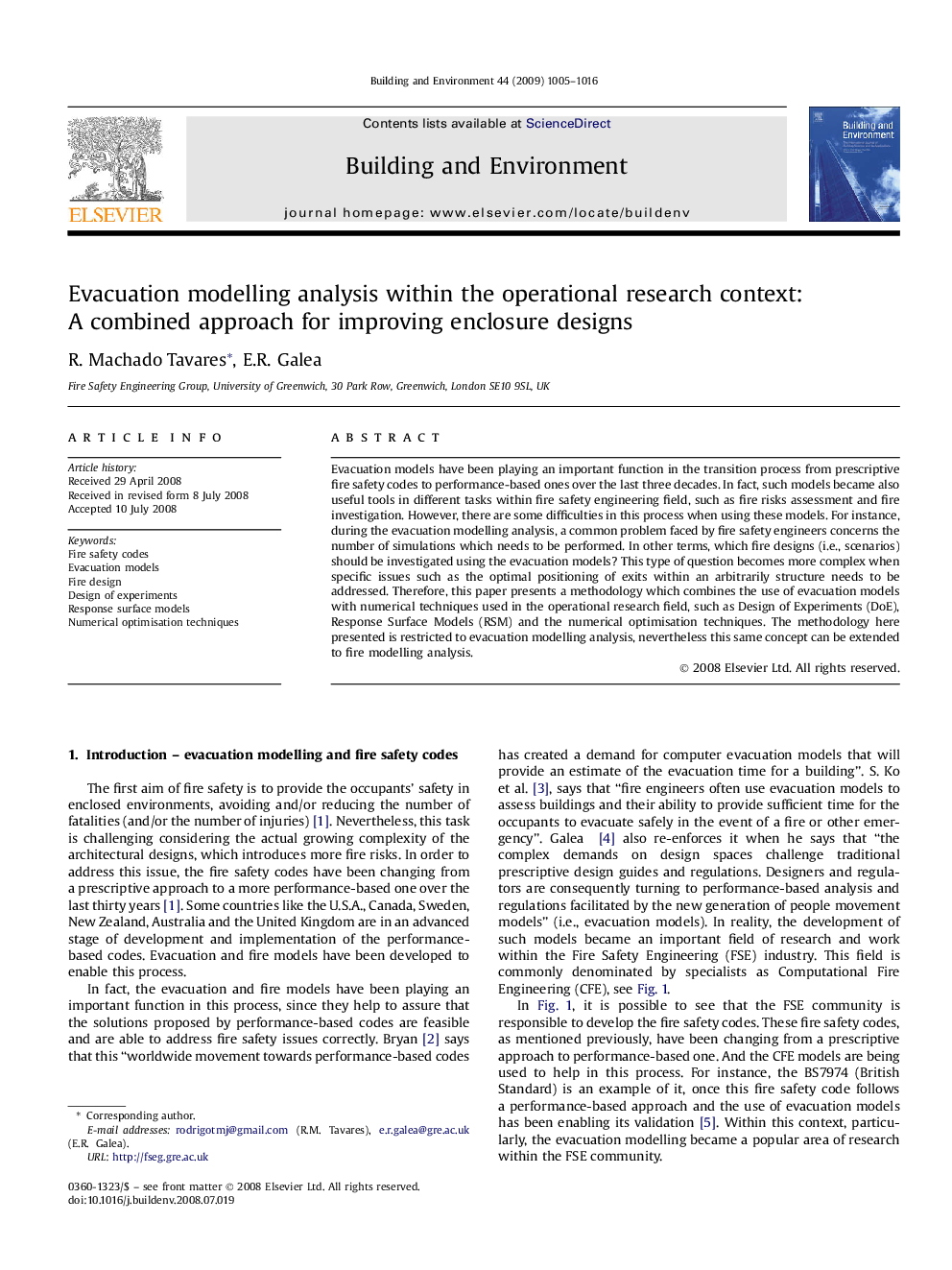| Article ID | Journal | Published Year | Pages | File Type |
|---|---|---|---|---|
| 249489 | Building and Environment | 2009 | 12 Pages |
Evacuation models have been playing an important function in the transition process from prescriptive fire safety codes to performance-based ones over the last three decades. In fact, such models became also useful tools in different tasks within fire safety engineering field, such as fire risks assessment and fire investigation. However, there are some difficulties in this process when using these models. For instance, during the evacuation modelling analysis, a common problem faced by fire safety engineers concerns the number of simulations which needs to be performed. In other terms, which fire designs (i.e., scenarios) should be investigated using the evacuation models? This type of question becomes more complex when specific issues such as the optimal positioning of exits within an arbitrarily structure needs to be addressed. Therefore, this paper presents a methodology which combines the use of evacuation models with numerical techniques used in the operational research field, such as Design of Experiments (DoE), Response Surface Models (RSM) and the numerical optimisation techniques. The methodology here presented is restricted to evacuation modelling analysis, nevertheless this same concept can be extended to fire modelling analysis.
